Affiliate links on Android Authority may earn us a commission. Learn more.
Today's smartphone giants: looking back at 2014, where they may be headed in 2015
Published onMarch 9, 2015
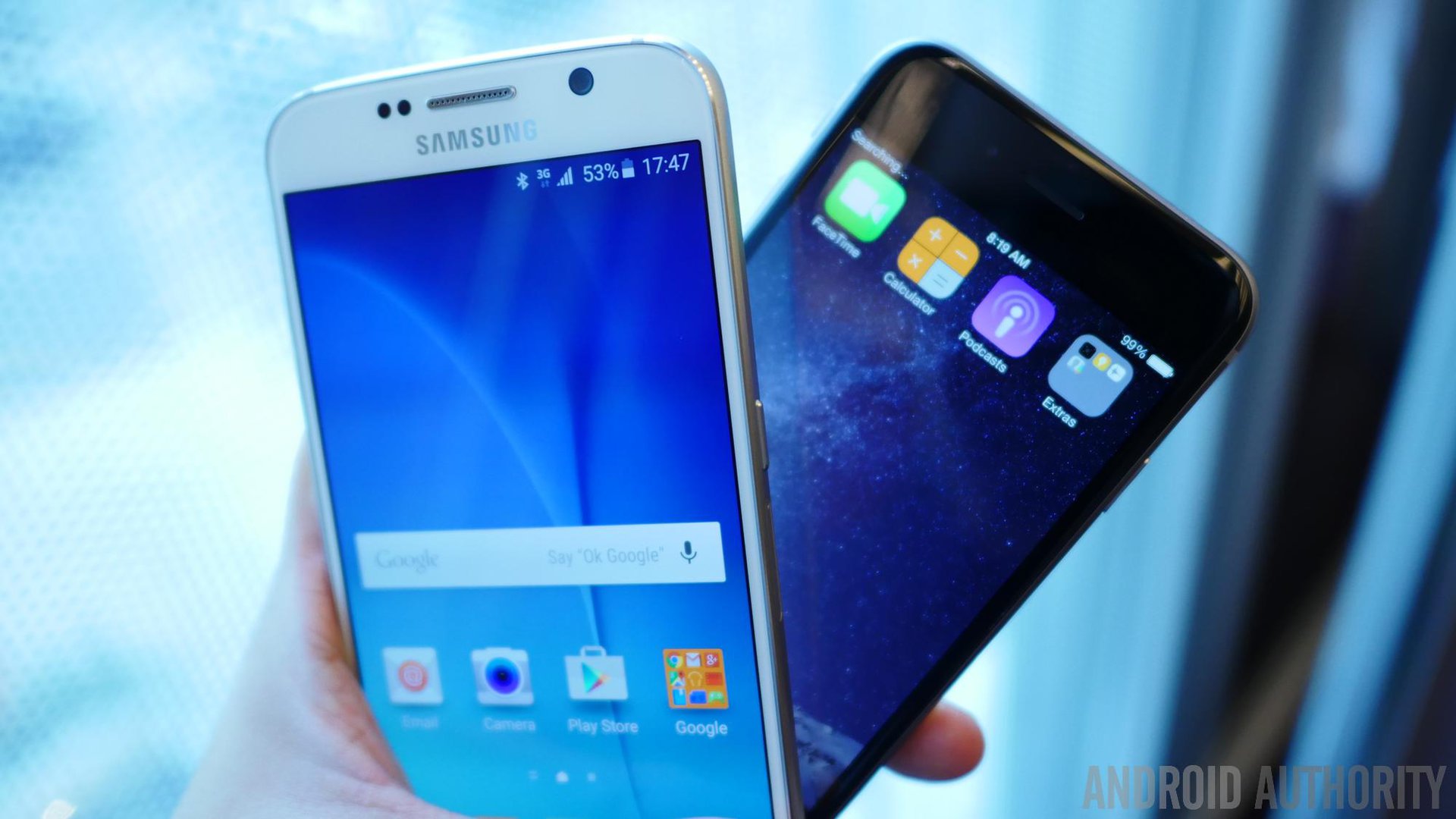
In terms of smartphone history, 2014 was a prolific year for smartphone OEMs. For Samsung, it saw a marked decline of sales and consumer apathy towards its Galaxy S product line, something the company hopes to reverse with the S6. For HTC, the Taiwanese company was finally able to breathe a sigh of relief as its finances went back to black, although how long that might last is questionable. For large Chinese manufacturers, the year saw huge gains in market share and earnings. For Apple however, 2014 was gloriously golden.
Gartner, the world’s largest IT research firm, has just published data on the 2014 curtain call, and the results might come as a surprise to some. Take a look at the first pair of charts:
Analysis will follow, but for now let’s just parse through the data:
With respect to Q4 2014, Apple found itself ahead of the competition. With just over a 20% of the global market share, it sold 74.8 million phones over the three month period. This is over 24 million phones more than it sold in the same period 2013, though interestingly enough the market share increase was only a little over 2.5% Q4 year-on-year. Note however, that Table 2 clearly shows despite the fantastic final quarter, Apple’s total sales in 2014 came to 191 million which, while a 40 million increase over Q3 2014, still puts it at only 15% of the global market share.
Despite the doom-and-gloom attitude that the press and even Samsung itself seem to have, the company was still the top spot in total 2014 sales at 307 million units, or roughly 25% of the market.
Samsung on the other hand, sold almost as many phones (about 73 million), yet dropped by almost 10 million from Q4 2013. Likewise, its market share contracted by a similar integer, almost 10%. Despite the doom-and-gloom attitude that the press and even Samsung itself seem to have, the company was still the top spot in total 2014 sales at 307 million units, or roughly 25% of the market. While it actually sold more phones in 2014, ironically the total annual market share percentage fell almost 6% from 2013.
Also worth mentioning are the Chinese OEMs, with Lenovo and HUAWEI both seeing nice growth, though neither as startling as that of Xiaomi, whose sales basically tripled when compared to those in Q3 2013.
One more chart to take a look at before getting down to details:
As you can see here, Android is unquestionably the world’s most dominant mobile OS player, with over 1 billion devices sold in 2014, and almost 81% of the market. Apple looks positively tiny by comparison at just 191 million, and about 15% of the market. Windows Phone became even less of a threat, despite its hardware actually selling more in 2014 than the year prior. Blackberry continued to decline with its annual sales dropping by over half, and its market share falling below 1%. For all the other OS platforms out there (Firefox OS, this means you), sales dropped along with market presence.
Now let’s take a more detailed look at each of the main players:
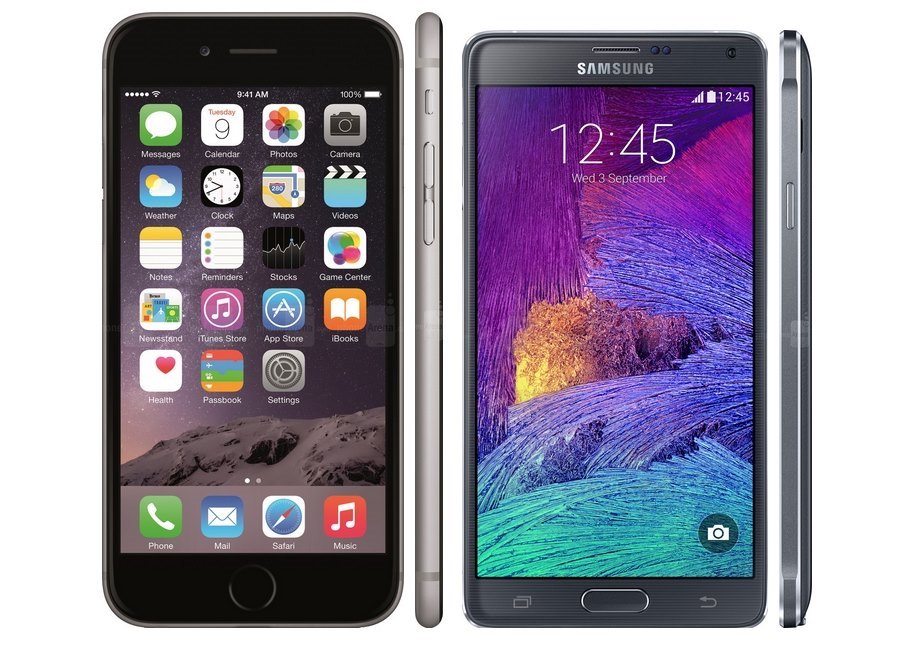
Apple
Cupertino struck gold with its iPhone 6 and iPhone 6 Plus, as evident by it earning the world’s record for biggest quarterly profit ever among publicly traded companies. There is a certain degree of “told you so”, “jony come lately” disgust which Android enthusiasts might feel when faced with such news, if only for the fact that Ashton Kutcher’s inspiration was so fiercely opposed to larger sized smartphones. Sure enough, when CEO Tim Cook finally took matters into his own hands and broke the stay on larger device sizes, the sales soared. Having access to China’s seemingly infinite population certainly doesn’t hurt, either. The fact that Apple could do so well in Q4 2014 as compared to Q4 2013 is proof positive the size made all the difference.
The bizarre irony here is that, if Apple were to actually license its iOS to third party OEMs, while its market share would definitely increase, its sales probably would plummet. As the sole distributor of iOS devices, the company ensures that anyone in the ecosystem must play by its rules, all software must run on its hardware, and all consumers must buy its products.
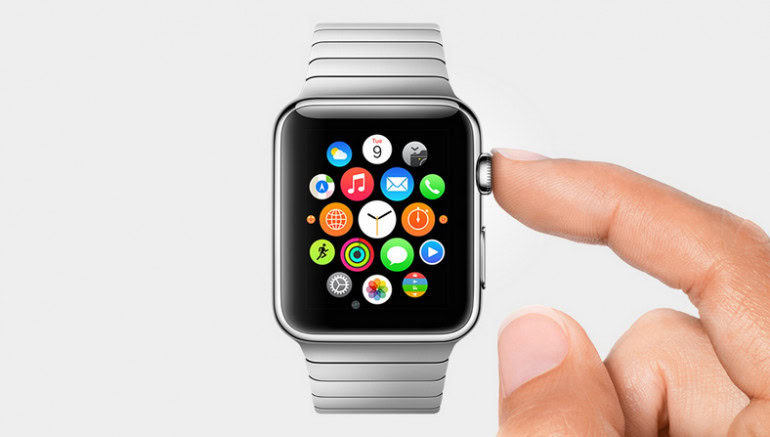
Outlook for 2015
While the first quarter will inevitably see some continued benefits of the iPhone 6 and 6 Plus hardware, the real test for the first half of the year will be that of the market’s reaction to the newly announced Apple Watch: if it takes off then things are golden, yet if it sinks like a stone, then Apple is going to have far more than its pride to worry about, as investor confidence may very well plummet out of fear the entire platform is a waste of resources.
There is a very real possibility that Apple has peaked, especially now that it has released a phablet
Assuming history repeats itself, the iPhone 6s and 6s Plus will inevitable see some big sales as well given the annuals (or, in other words, people who upgrade each year out of love for Apple) or those whose 2-year contracts have lapsed. Will this surpass the sales of Q4 2014? That is highly unlikely unless the iPad Air 3 and Mini 4 are big sellers, or the rumored iPad Pro comes out and becomes a hit. There is a very real possibility that Apple has peaked, especially now that it has released a phablet: it was arguably the one thing users were up-in-arms about, and now that they have one, the need to upgrade the hardware each year may have diminishing utility value (assuming it had genuine value to begin with).
One potential profit point for Apple, however: If the company releases a third iPhone product line things could be almost assured to accelerate: a new device with a small screen. For all those who didn’t update to the 6/6 Plus because of their being too big, and all those who won’t this year either, a brand new top-tier-small-screen offering might go a long way, especially for all those who own an iPhone 5 or 5s and won’t be inclined to upgrade otherwise.
Apple Watch
While we already devoted some substantial coverage of the Apple Watch yesterday, the one big take away was the price. While it is still too early to make any conclusions about the potential success (or lack thereof) the brand might have, the fact is the Apple Watch Edition will retail for $10,000; factor in the band, and the total is one pretty penny indeed. Even the “mid-tier” watch starts at over $500. Still, this pricing structure guarantees two things: (1) that people will know who has cash to burn, and (2) that the Apple Watch will not be mistaken for some kind of cheap trinket or toy. Image, as they say, is everything, and by turning its wearable into a fusion of hardware, software, lust, and luxury, Cupertino may have just created the perfect concoction to elevate the platform from “geek” to “chic”.
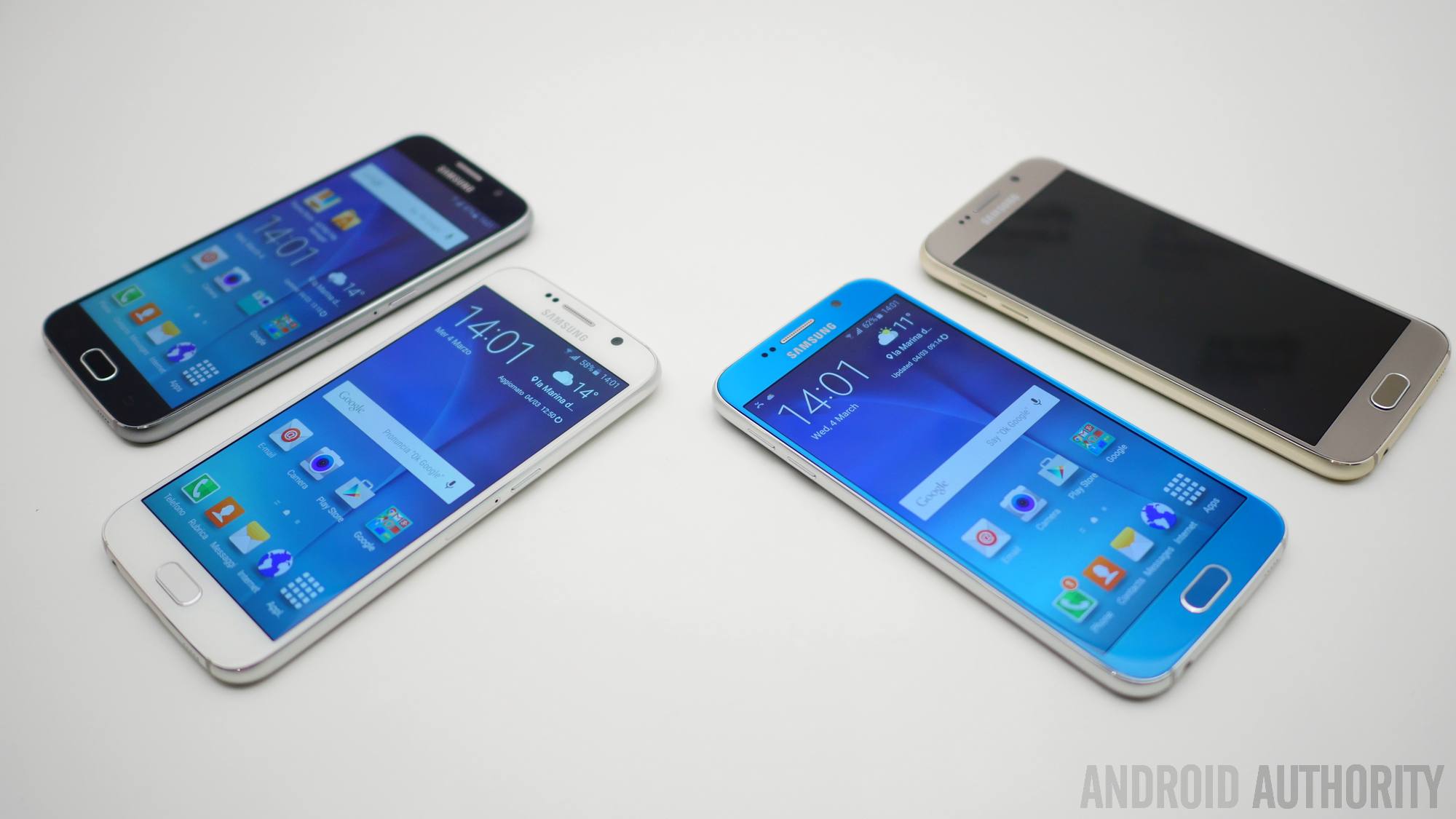
Samsung
We’ve already discussed Samsung at length in the past few weeks and months, so in an effort to avoid rehash this will be succinct: Korea’s largest conglomerate had a really Debbie Downer in 2014 with its Galaxy S5 selling 40% less than anticipated. Even when the redesigned, metal-framed Galaxy Note 4 released in the fall, Apple’s phablet juggernaut was there to usurp sales; a bitterly distasteful situation for Samsung, given how it basically created the genre with the original Galaxy Note and did all the groundwork to legitimize the screen size. The company pledged it would fix things for the coming year, however.
Outlook for 2015
At the moment, the Galaxy S6 and S6 Edge seem to be the exact panacea Samsung needed to solve its fiscal fall-out. The press has been raving about the pair of redesigned, premium flagships, and barring some fan fury over the lack of MicroSD support and a removable battery, the public seems quite taken with them as well. The company is also taking a break from smartwatches for the time being, has yet to announce any tablets yet (by this time last year it had already unearthed no less than four), and has been quoted by saying it plans to focus on the core product lines for the time being.
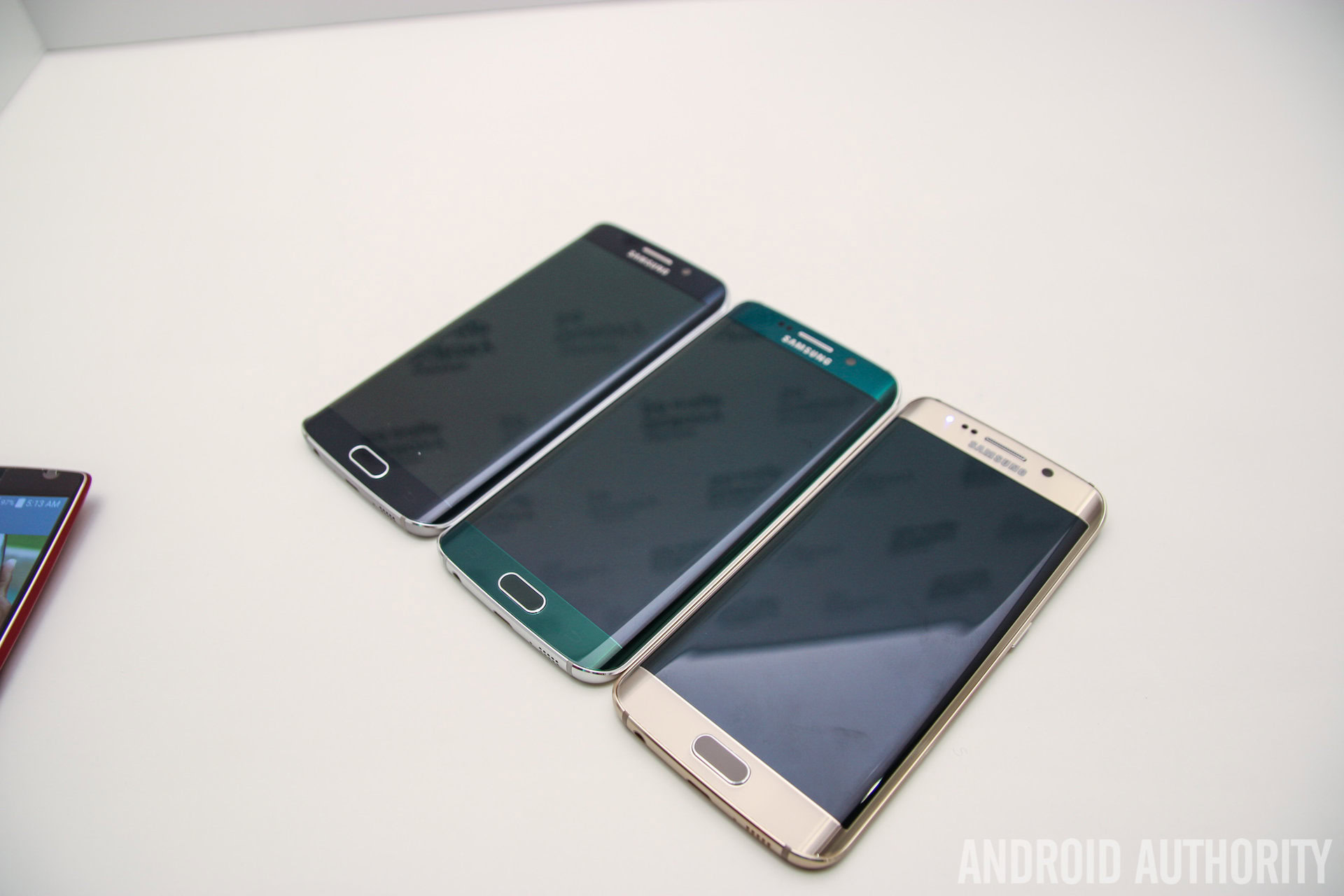
The ultimate success of the Galaxy S6 might be determined by the price point at which its set. Some have speculated that the S6 will occupy a lower price point so as to better compete in countries like China and India, where Chinese OEMs have stolen Samsung’s #1 spot. This would leave the Galaxy S6 Edge as the premium, expensive variant for those with extra cash to burn. Still, this hypothesis remains unlikely given that even when it comes to mid-range or budget hardware, Samsung doesn’t seem to interested in lowering prices to compete with its rivals (see the Galaxy A series for example).
The ultimate success of the Galaxy S6 might be determined by the price point at which its set.
As far as tablets go, while its expected the company will announce the Galaxy Tab S2 in the coming months, the rumored specs and hardware isn’t wildly different from the pair that released last year. On the contrary however, the 4:3 screen aspect ratio it’s said to ship with might be a huge turn off for Samsung supporters, or it might be just the ticket to properly displace the iPad in terms of sales dominance, especially if it does in fact, include an all-metal frame. Still, given the high price tag both will inevitably carry, it’s difficult to make heads or tails of this topic.
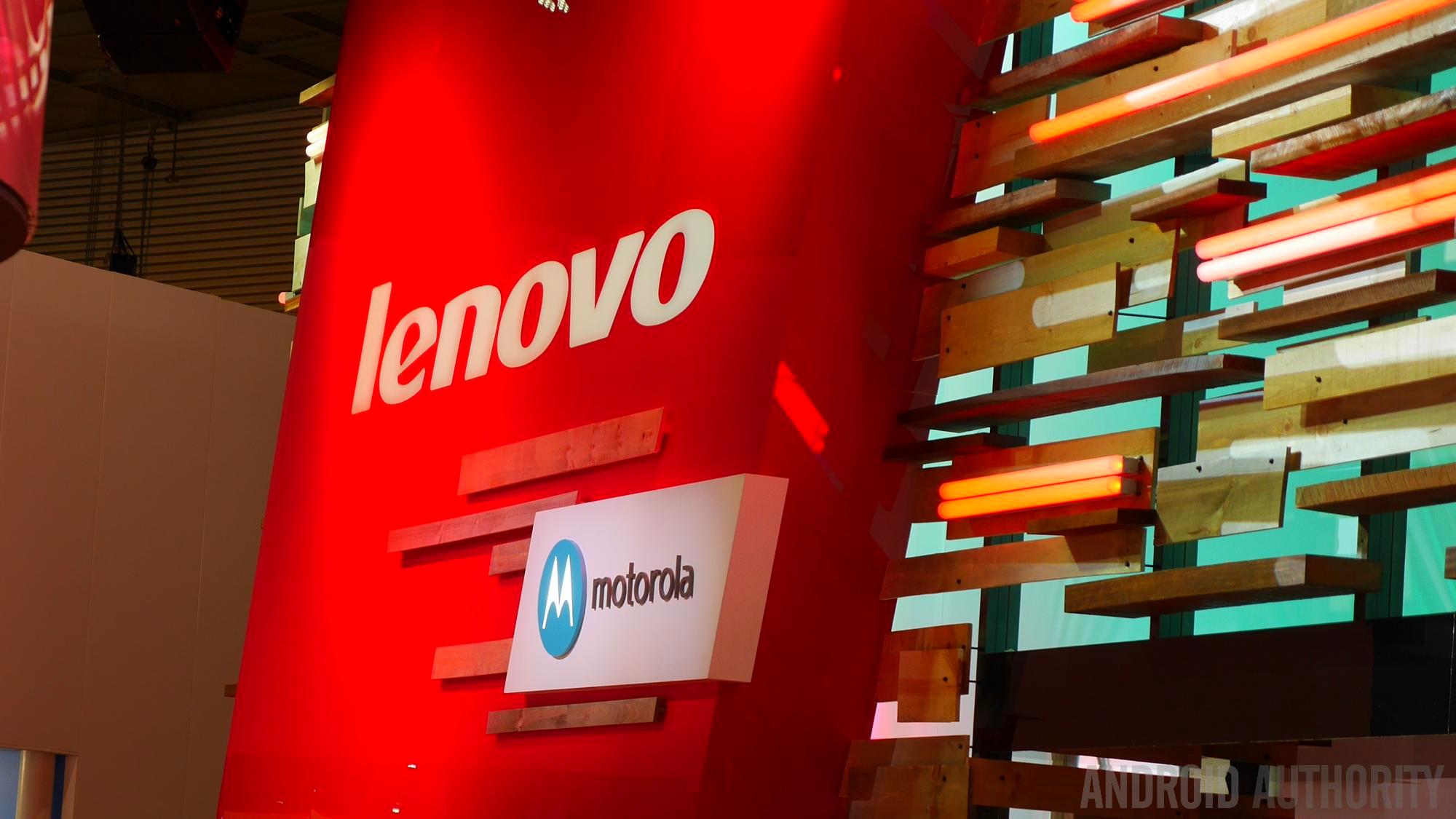
Lenovo
Given that Motorola is now part of this Chinese giant (and indeed Gartner’s figures account for it as such), Lenovo had a fantastic Q4 last year. While its global market share might only have grown half-a-percent or so when compared with Q4 2013, sales-wise the bump was about 8 million units higher.
Outlook for 2015
Given that Motorola is getting major praise around the globe with its recent offerings, it’s likely that Lenovo will see increased growth this year, especially now that it can directly influence the decisions and products the formerly Google-owned entity puts out. The Moto X is a fine flagship with rich customization (something that irks one Ive) and the budget-friendly Moto G and Moto E are consistently getting good reviews for pairing affordability with good performance and relatively excellent hardware. These products will definitely help Lenovo in territories outside Asia given the extremely limited global availability of its own branded products such as the Vibe Z2 Pro.
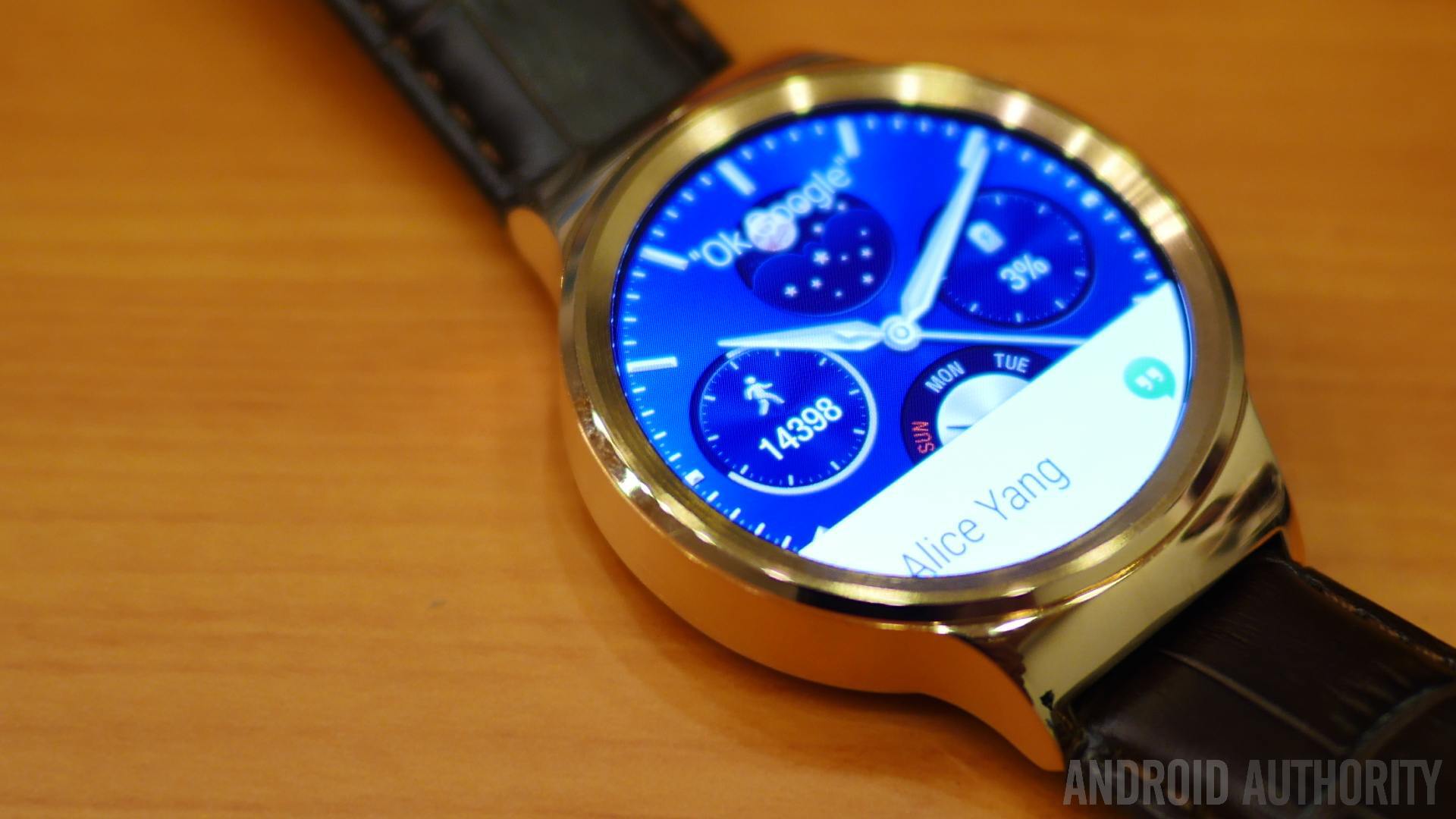
HUAWEI and Xiaomi
Rather unsurprisingly, both companies had a fantastic year in 2014 with booming sales at the expense of Samsung in their home market of China, as well as neighboring India. Xiaomi in particular, has a unique business model that keeps costs low along with prices, and is definately the surprise success story of 2014 given its meteoric accomplishments. For a better look at them, and other Chinese OEMs as well, have a look at one more graph from the Gartner report:
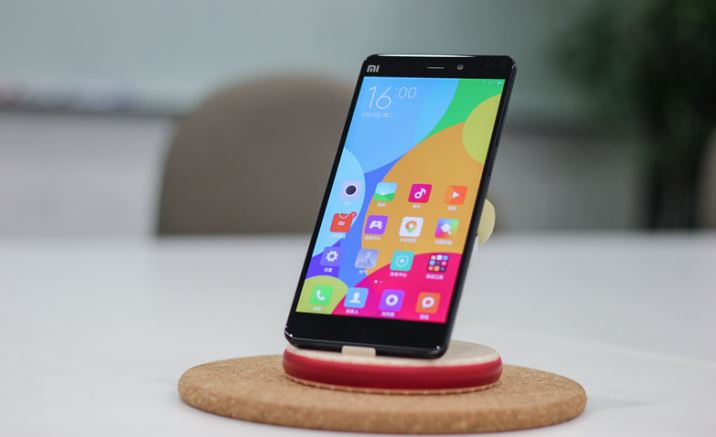
Outlook for 2015
Fantastic, to say the least. HUAWEI has just announced a fantastic new tablet and eye-catching smartwatch, not to mention updates to its other wearable offerings as well. Xiaomi has announced plans to broadly expand the availability of its products to outside markets, and even plans to open an accessory store in Europe and eventually in the US market. Both of these companies know how to make competitively priced hardware complete with their own unique approach to Android, and Asian customers couldn’t be happier. While HUAWEI is already relatively known in non-Asian territories (though perhaps for the wrong reasons), Xiaomi will need to work somewhat harder to establish itself in markets like North America and Europe.
LG
While LG’s market share technically shrunk around 0.2% in 2014, it actually managed to sell over 10 million more devices in the same period, a pretty impressive feat considering that prior to the G2, many were actively seeking to write-off the company as “just another small-fry.” With the release of the G3, the world’s first mainstream QHD device was released to the public and the comparisons immediately began. Last summer also saw the release of the angular LG G Watch, only to be replaced just months later by the dramatically more stylish LG G Watch R, Android Wear’s second rounded wearable, and the first to have a complete circular display.
Outlook for 2015
LG seemingly has nowhere to go but up, at least on paper as it rides on the success of its flagship series. While the G4 has yet to be announced (or even leaked, for that matter), the anticipation for the hardware is quite high with expectations set on another QHD display (with a higher maximum brightness setting), a new form factor, and possibly the use of metal. Of perhaps greater interest is the fact that the company has already announced plans for an even more premium flagship, superior to the G4. Some have already questioned the logic of such an idea for it undermines the legitimacy of the G4.
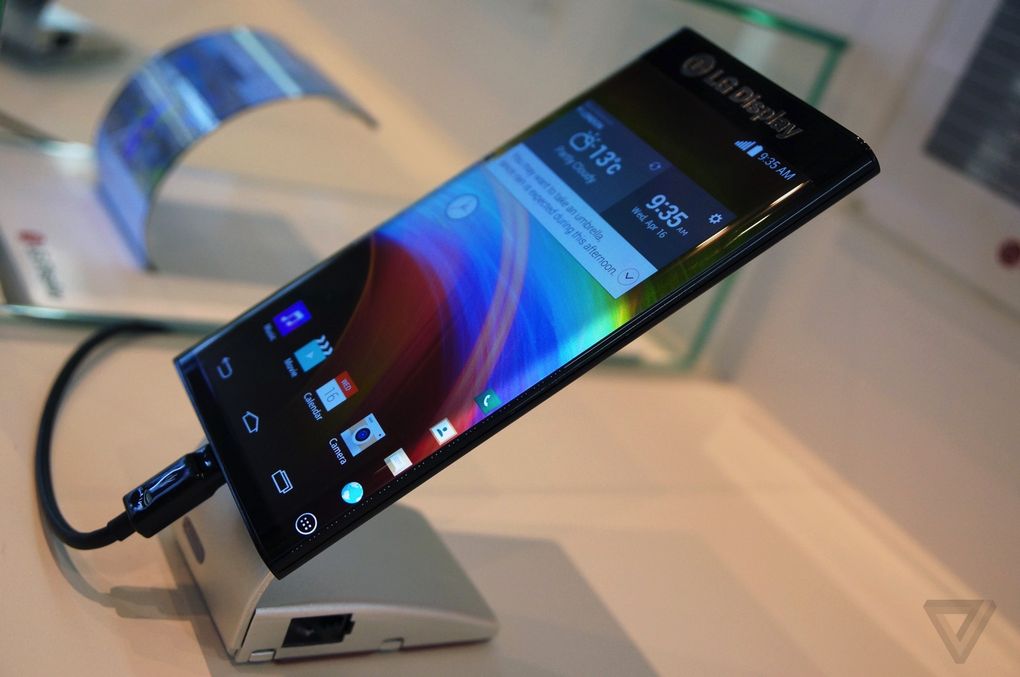
If Samsung can have two flagships, however, why can’t LG. Our money is on either a Galaxy Note-type competitor or else a G4 Curve, which would make use of the dual curved display sides which Samsung has included on the Galaxy S6 Edge, and which LG itself already demonstrated back at CES in January. Considering that the Galaxy S6 Edge has already received 5 million pre-orders from vendors, there is definitely a substantial market for the technology, and for LG to showcase its plastic OLED prowess.
Also worth mentioning is the G Flex 2, the world’s first commercial device to use Qualcomm’s Snapdragon 810 SoC, and features a 5.5-inch HD curved POLED display that is vastly superior to the one featured in the original 6-inch model. Although it will be hard to shake off the niche image the product has, by reducing the screen size LG has made it much more accessible to the masses. By selecting the latest-greatest CPU, the Korean conglomerate has also told the world it means business when it comes to putting out top-notch hardware.
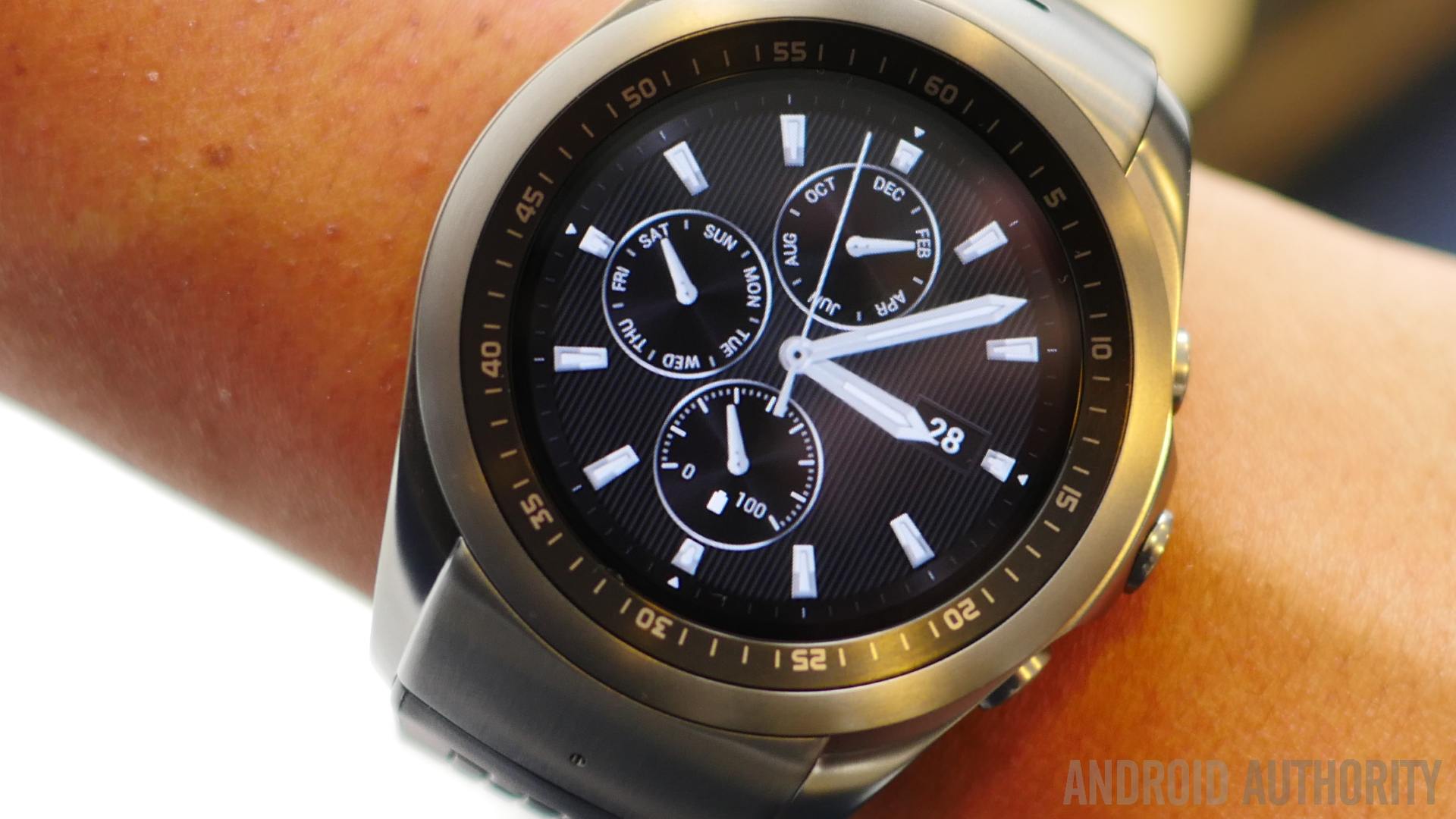
Beyond phones there is the LG Watch Urbane and the Urbane LTE. Both are all-metal affairs that once again use circular displays, however while the former runs Android Wear, the latter is running LG’s own OS (thus making it similar to Samsung’s Gear series which run Tizen) and thus opens up a window for a lot of potential should it be a success. The very fact that the piece will include an LTE modem itself is amazing, especially given that Samsung’s Gear S offering has but standard 3G connectivity.
On a final note, there are rumors floating around that LG has been selected to produce another Nexus device this year, along with HUAWEI. While the entire thing might be nothing more than hot-air, LG received a lot of praise for its Nexus 4 and 5, having merged great hardware with killer pricing, and it’s possible history will repeat be it in smartphone or tablet form.
Honorable Mentions:
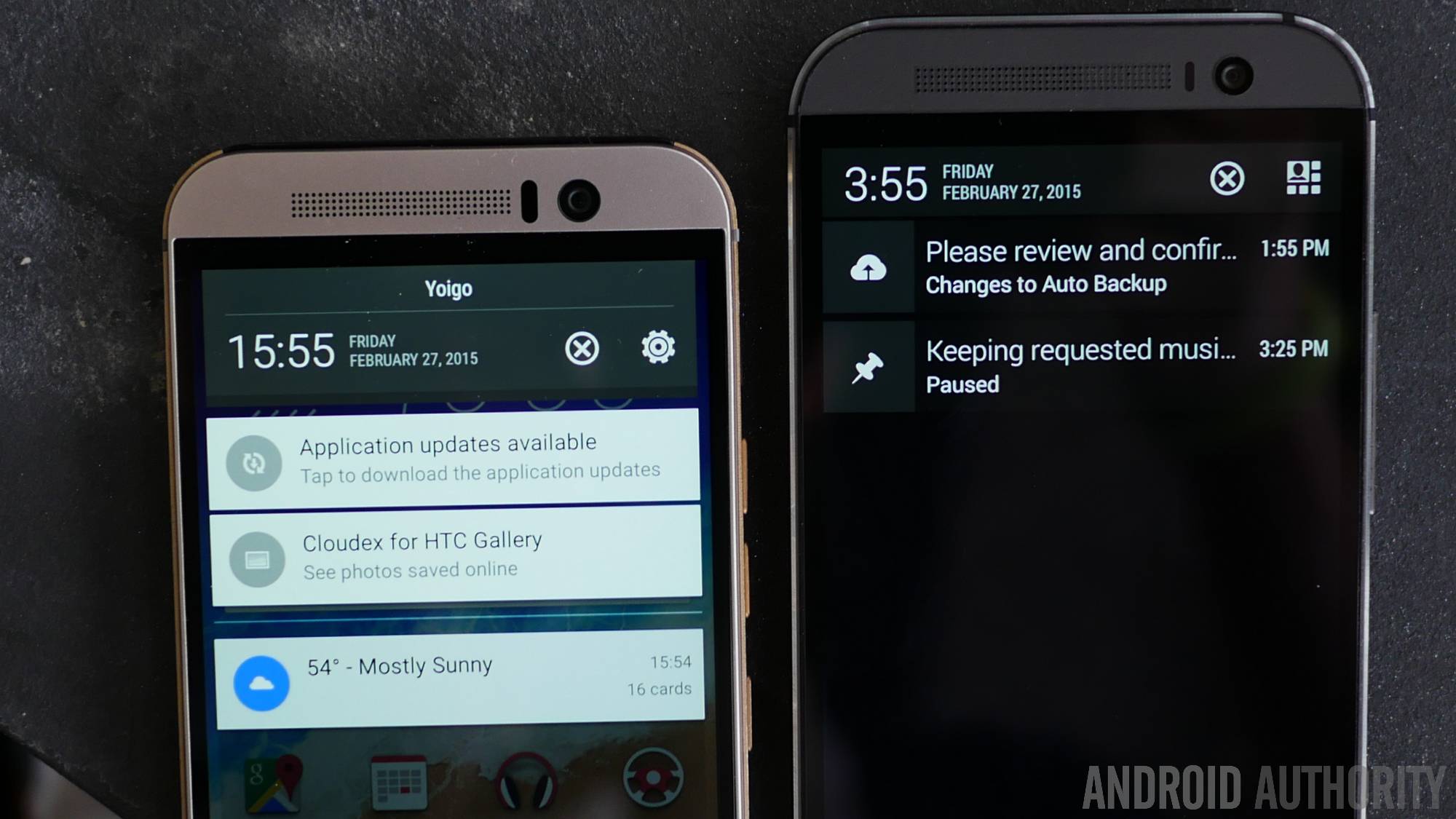
HTC
Interestingly enough HTCisn’t present on any of the three OEM-specific tables published by Gartner, a testament to just how far from grace the Taiwnese firm has fallen. The company had a rather diverse line of flagship products in 2014 that included consisted of the flagship Android HTCOne M8 to the…Windows Phone 8 HTCOne M8. Still, the Desire Eye was a flagship in all but name, and the various other offerings such as the Butterfly 2 and even the HTCRe periscope-inspired action camera showed the company is full of ideas.
Outlook for 2015
So far, HTC is off to a somewhat rough start given its decision to rehash last year’s twice-released HTCOne M8 with updated internals and a different camera pair under the name HTCOne M9. It has received a lot of criticism from fans and foes alike for this, but until the product hits stores nothing can be said in certain. The HTC Vive might prove to be a very promising piece of kit and at the very least comes as an unexpected development that had surprised many. The potential for a “true” flagship to hit this summer (after hype for the S6 has died down) is still a possibility, although sadly anything HTCreleases this year may end up being largely ignored by all but its devoted fans. Still, the company has gone on record promising 2015 will be its best yet, so anything is possible.
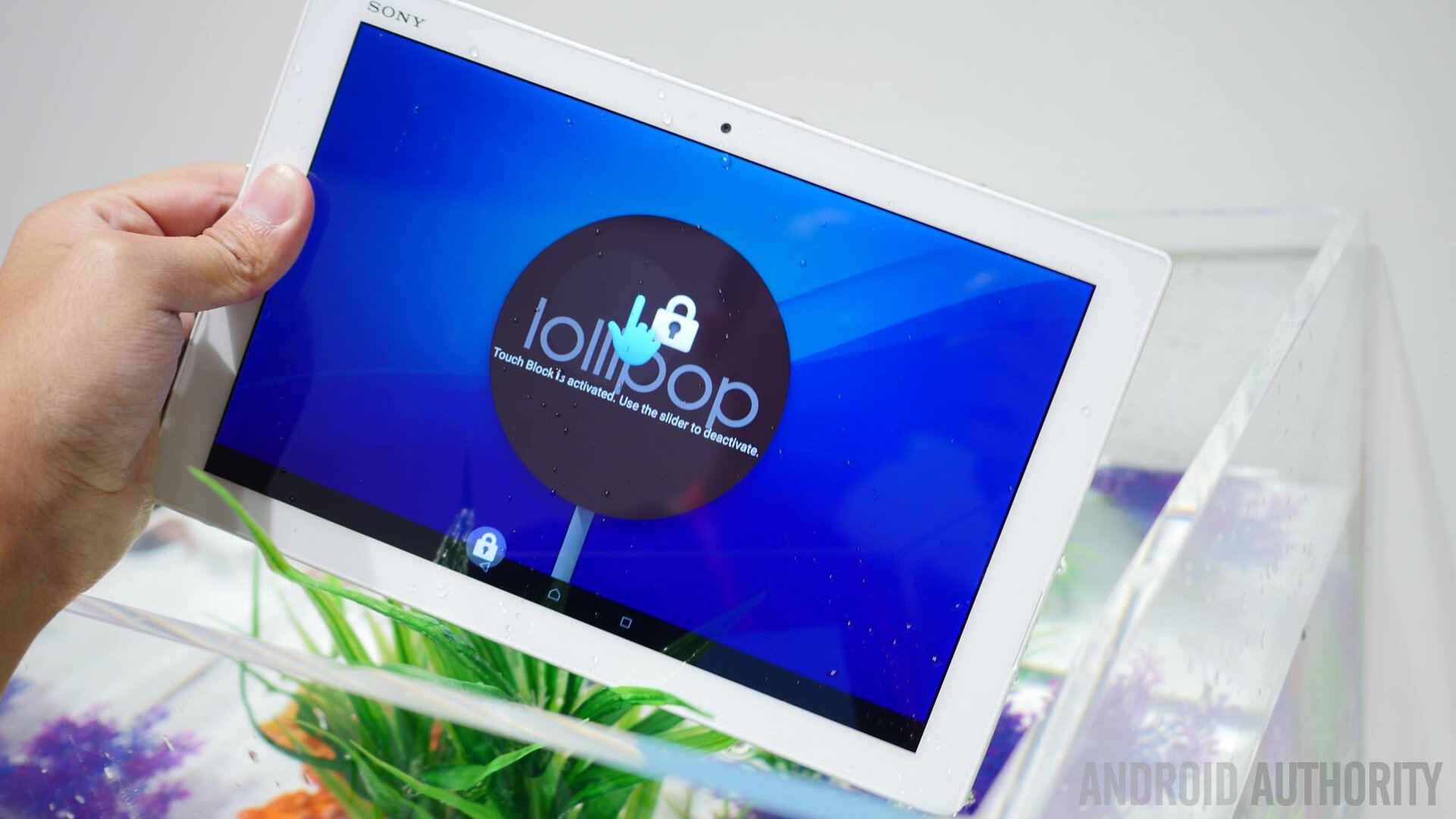
Sony
Interestingly enough, when one examines the final Gartner table (Table 4), it would seem as if Sony had neither a good nor a bad 2014. On paper at least. The company had basically no growth or decline with respect to sales, though considering that most of its smartphones are sold in Japan, that might intrinsically be a bad thing. 2014 was a hard year indeed however, which saw the sale of its VAIO line to a third party entity as well as the continuation of its poor overall financial performance.
Outlook for 2015
Given the endless stream of bad news revolving around Sony, its finances, and its products, pessimism would seemingly go hand-in-hand. Still, the Xperia Z4 Tablet has received a lot of good press in the few days since its official announcement and many are convinced the upcoming Xperia Z4 smartphone will be “the one” to put Sony back on the path to success, especially since the Japanese conglomerate has seemingly gotten it straight that the single flagship product it has need not be updated every few months. Still, Sony has a lot of work cut out for it given the severe lack of presence its mobile division has in key territories like North America.
Wrap-Up
So there you have it. We took a look at the final sales data from 2014, made some sense of it, and then offered some thoughts on what the remaining 9+ months of 2015 may look like. Please feel free to weigh in on the figures and feature with your own thoughts, and let us know what you expect for 2015, or what you made of 2014’s report.